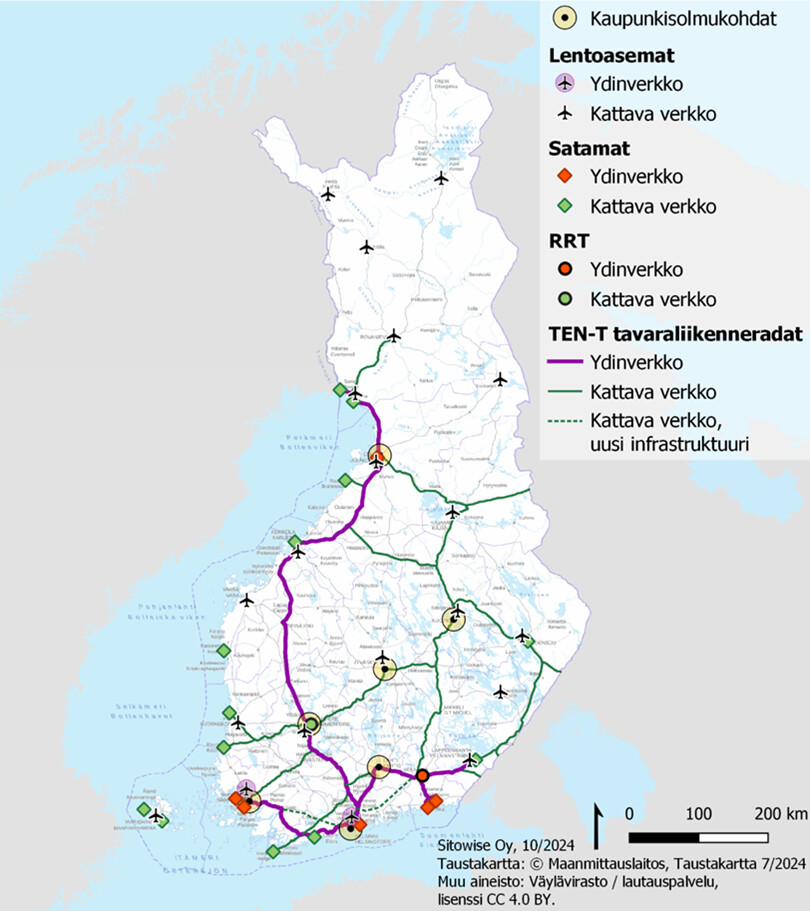This situational picture provides information about TEN-T network criteria for the railway network and their fulfilment in Finland. The situational picture is primarily updated twice a year. The information is produced by the Finnish Transport Infrastructure Agency. The information is part of the strategic situational picture of the Finnish transport network.
Key criteria for the railway network in the TEN-T guideline regulation 2013
Regulation (EU) No 1315/2013 of the European Parliament and of the Council specifies the railway network included in the Trans-European Transport Network (TEN-T) and its criteria. The TEN-T network consists of two levels: the core network to be built by 2030 and the comprehensive network to be built by 2050.
According to the criteria of the regulation, the rails of the core and comprehensive networks will be completely electrified and sidings will be electrified as far as necessary for electric train transport. ERTMS will be utilised fully. The following criteria have been set for the freight lines of the core network: at least 22.5 t axle load, 100 km/h line speed and the possibility of running trains with a length of 740 m. The nominal track gauge for new railway lines is 1,435 mm. The TEN-T core network requirements must be met by 2030. Upon request and for justified grounds, the Commission may exempt separate core networks from the above requirement. Finland has not applied for an exemption. Finland is currently preparing its position on the re-evaluation of the TEN-T regulation.
